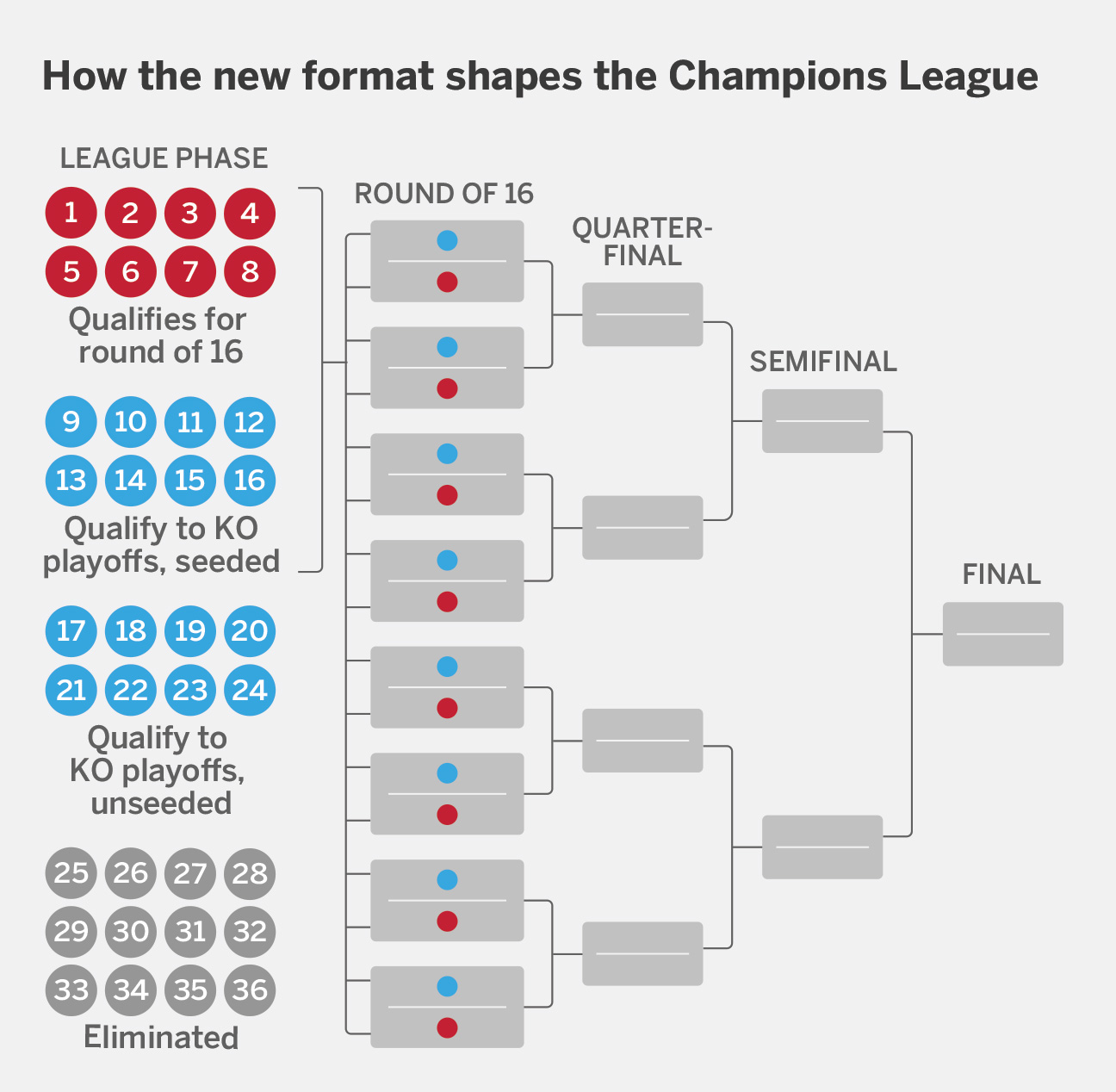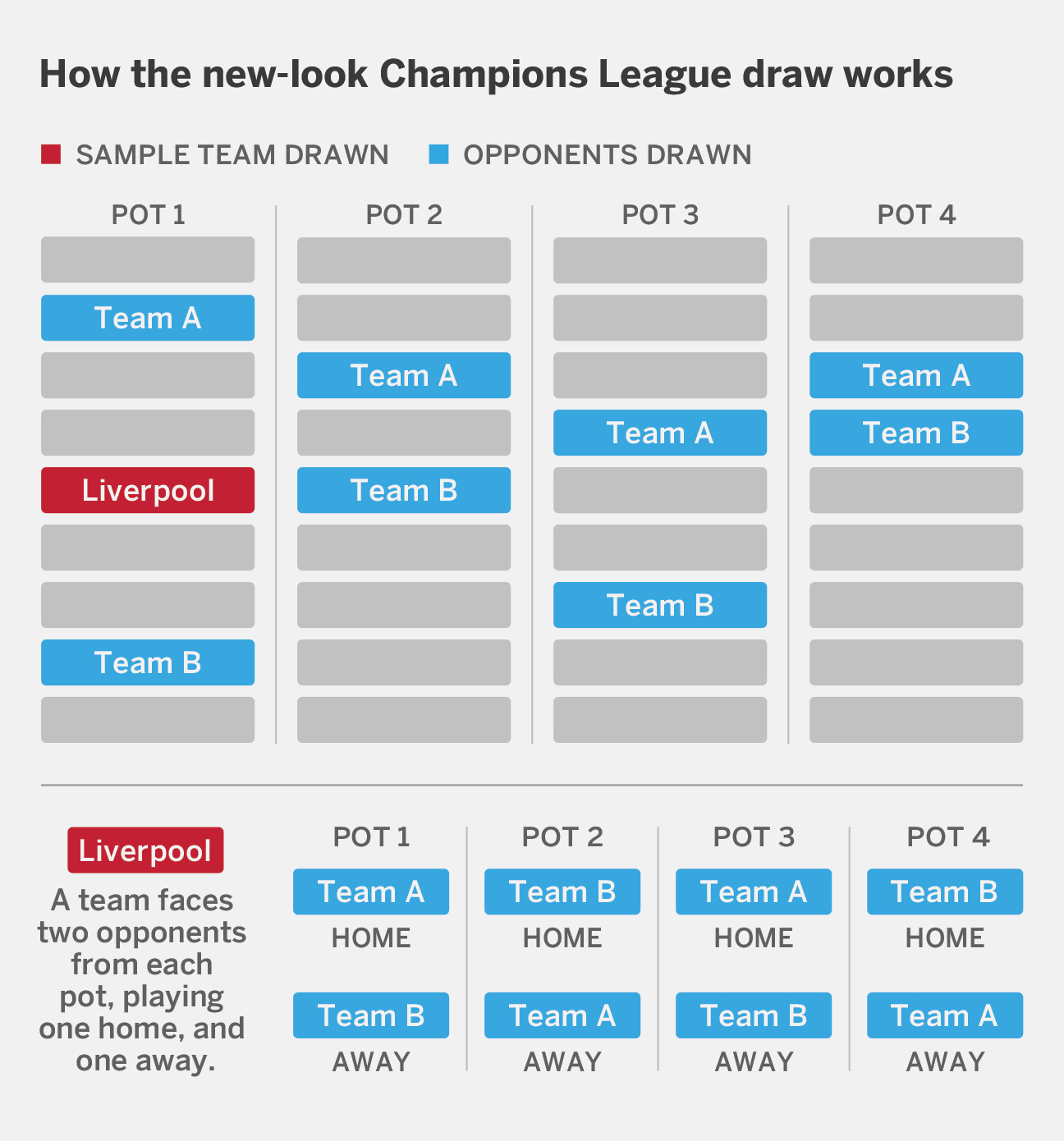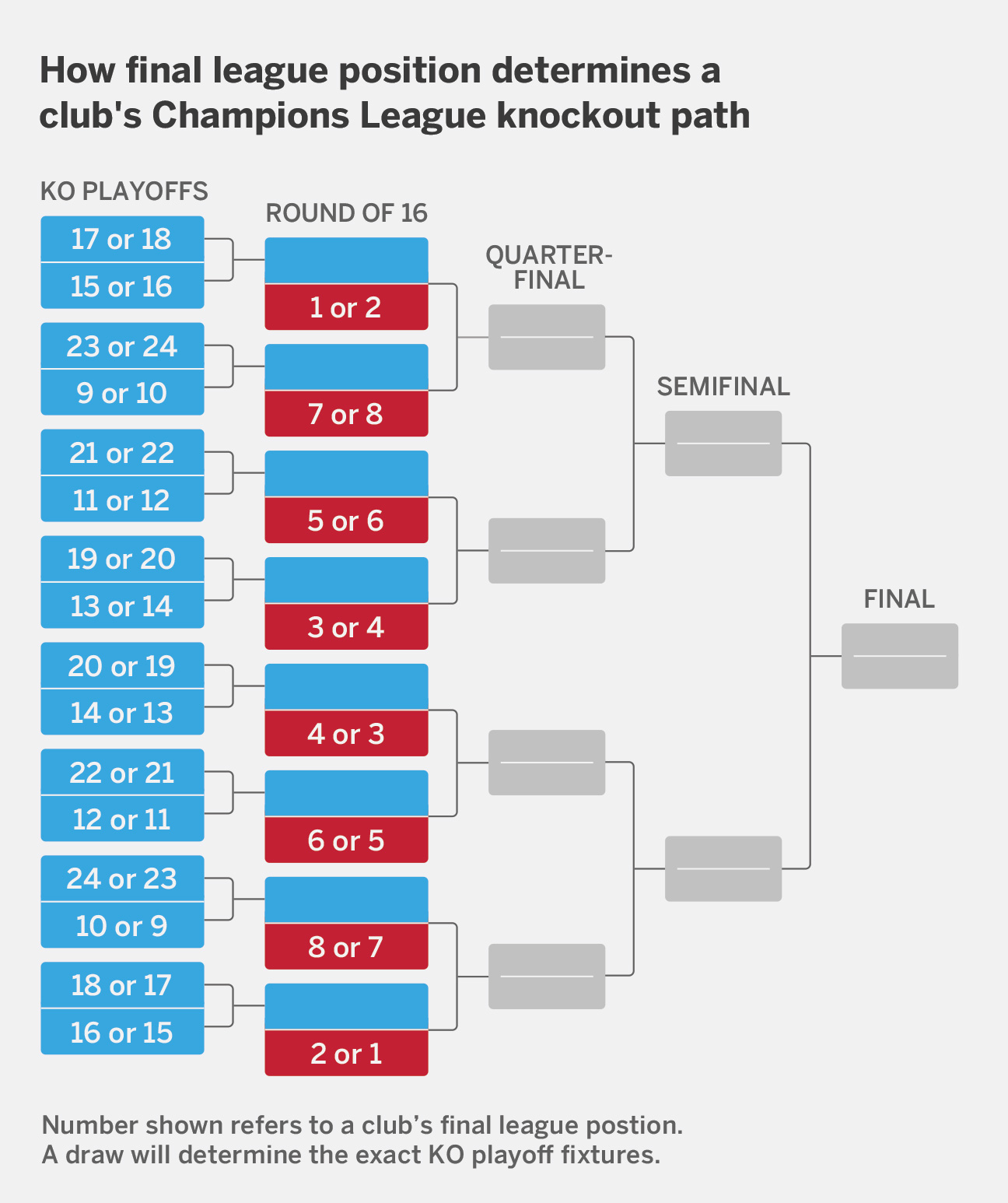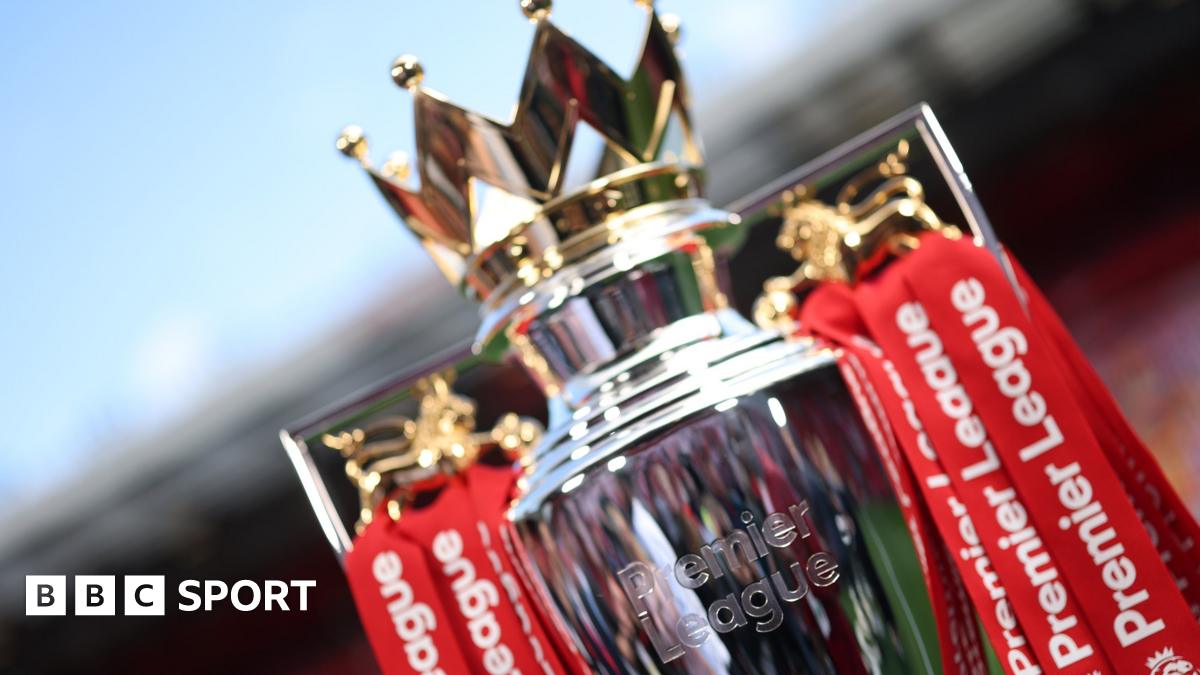The UEFA Champions League is back and, as we prepare for the second season of the “League Phase” format, it’s worth a refresher of how it plays out. Some changes that were made were simple, others were more complicated, and a few might still seem a bit of a mystery until we get to the knockout rounds in February even though we’ve already had a taste of it. Oh, and there’s been a change to the knockouts for this season.
So, what is the new format? How does the draw work? And what will the League Phase look like?
What is the new Champions League format?
Let’s start with the basics. Last season marked the first time in 21 years that we’d had a format change for Europe’s top club competition. For the previous 21 seasons, 32 teams qualified and were drawn into eight groups of four. The top two teams went through to the round of 16, with third-place dropping into the UEFA Cup/Europa League and fourth-place eliminated from Europe entirely.
We now have 36 teams, but they are no longer drawn into groups. Instead, we have the Champions League “League Phase.” All clubs are in one big league table.
So, how does it work?
• Teams are drawn to play eight fixtures, four at home and four away
• Teams in positions 25 to 36 are eliminated in January
• The 16 teams in positions 9 through to 24 play in the knockout phase playoffs, in February, to earn a place in the round of 16
• The top eight go straight through to the round of 16, played in March

It’s no longer possible to drop into the Europa League from the Champions League (or into the Conference League from the Europa League). Once you’re out, you’re out.
From the knockout phase playoffs onwards, the competition retains its two-legged format through to the semifinals, with a traditional one-legged final, but with limited draws — more on that later.
Ok, so how are the fixtures created?
Rather than groups, the Champions League draw on Thursday, Aug. 28 (5 p.m. UK / midday ET) will create individual eight-game fixture lists for each of the 36 participants.
Timings
Pot 1 begins: 5.31 p.m. UK / 12.31 p.m. ET
Pot 2 begins: 5.44 p.m. UK / 12.44 p.m. ET
Pot 3 begins: 5.55 p.m. UK / 12.55 p.m. ET
Pot 4 begins: 6.03 p.m. UK / 13.03 p.m. ET
Draw completed: 6.08 p.m. UK / 13.08 p.m. ET
Not much has changed in how the draw looks on paper, as there are still four pots of teams that contain nine clubs rather than eight. But there are still some notable adjustments given the expanded field.
How seeding changed
Pot 1 used to house the holders of the Champions League and Europa League, plus the champions of the top six domestic leagues. Pots 2 through 4 would then be ordered by strength based on UEFA’s club coefficient, which ranks clubs on performance in Europe over the previous five seasons.
– Ogden: The beginning of the end for Amorim?
– The Premier League’s most intriguing summer moves
– Striker domino effect: How Liverpool, Chelsea, Man Utd and others net out
Now only the Champions League titleholders (Paris Saint-Germain) are automatically in Pot 1, all other positions are based upon the UEFA club coefficient. This is intended to give a sliding scale of strength down through the pots, so teams face two opponents from each bracket.
However, the new Champions League format means the pot you are in has less relevance, as teams are drawn to play two clubs from their own pot. Under the old system, being in Pot 1 could give you a more generous draw, as you couldn’t play teams from the strongest pot in the group phase.
POT 1:
Paris Saint-Germain
Real Madrid
Manchester City
Bayern Munich
Liverpool
Internazionale
Chelsea
Borussia Dortmund
Barcelona
POT 2
Arsenal
Bayer Leverkusen
Atlético Madrid
Benfica
Atalanta
Villarreal
Juventus
Eintracht Frankfurt
Club Brugge
POT 3
Tottenham Hotspur
PSV Eindhoven
Ajax
Napoli
Sporting CP
Olympiacos
Slavia Prague
Bodo/Glimt
Marseille
POT 4
F.C. København
AS Monaco
Galatasaray
Union St.-Gilloise
FK Qarabag
Athletic Club
Newcastle United
Pafos
Kairat Almaty
There are two main principles to the draw this season:
• No club can play another team from their own league (for example, Arsenal can’t play Liverpool)
• A club can play no more than two teams from one country (so Arsenal if draw Bayern Munich and Borussia Dortmund they would then be unable to face Eintracht Frankfurt)
And there’s a twist. With six Premier League teams in the Champions League, and three of those in Pot 1, UEFA needs to prevent a “deadlock” scenario. What does that mean? Well, the draw could not be completed within the above constraints.
In simple terms: English clubs cannot play against each other so to avoid a “deadlock” with this clause, the non-English clubs in Pot 1 must all play two Premier League teams — either from Pot 1, Arsenal, Newcastle United or Tottenham. Make sense?
In effect, it means Barcelona, Bayern Munich, Borussia Dortmund, Inter Milan, Paris Saint-Germain and Real Madrid could get, on paper, a slightly harder set of fixtures. And that’s more so for a team that faces Arsenal, Tottenham and/or Newcastle plus two non-English teams from Pot 1.
Think of it this way. If Bayern get to Pot 4 and up to that point they have only drawn one English team, they must play Newcastle — when on paper the likes of Pafos and Kairat Almaty would be more favourable. And if they were to also draw Athletic Club, that clearly presents a much tougher fixture list than others in Pot 1 may get.
Added to that, the three English teams in Pot 1 cannot draw Newcastle, so have a higher chance of more favourable fixtures from Pot 4.
The draw ceremony is noticeably different, too. In previous seasons, the fates of all teams would be decided by a manual draw, with balls and pots for teams and groups, by a parade of former Champions League players. But the new format is so complicated that it would take over three hours and require 1,296 balls to complete in the same way.
Here’s how it works:
• A team is drawn by an ex-player on stage (starting with Pot 1 and ending with Pot 4)
• A computer randomly selects that club’s eight opponents (subject to the constraints of the draw), also determining which match is to be played home or away
The pots might not be so crucial, but they still have relevance as each contains a range of quality. The distribution of home and away games is also important given the range of possible opponents for each club.
Each team is given fixtures against two opponents from each pot, and this is how it might look:

When will the games be played?
There’s two matches at 5.45 p.m. UK / 12.45 p.m. ET and the rest at 8 p.m. UK / 3 p.m. ET. However, on the final day of the League Phase all 18 matches will begin at 8 p.m. UK / 3 p.m. ET.
UEFA has expanded the footprint of the European calendar to cover 10 midweeks, rather than the six it used to. The Champions League will take up eight matchdays, with the spare two used to give the Europa League and Conference League their own standalone weeks. Only the Champions League will play on the week of Sept. 16-18, with the Europa League taking Sept. 24-25 and the Conference League on Dec. 18.
The Champions League League Phase now finishes in January, rather than December, with six games played before Christmas and the last two rounds on Jan. 20-21 and Jan. 28.
With the new format producing multiple Pot 1 fixtures, when in previous seasons there wouldn’t be any at all, UEFA will look to create a spread of “marquee” matches across the matchdays.
How do the knockout rounds and the bracket work?
UEFA used to hold draws throughout the knockout rounds, but the new method of using the league ranking to build the bracket means just two are required: one for the knockout phase playoffs (Jan. 30), and another for the round of 16 (Feb. 27) to complete the bracket.
There is no country protection, so for instance, Liverpool could play Chelsea in the round of 16. In past seasons, country protection remained in place until the quarterfinals.
The strength of teams in the expanded tournament means some heavyweight teams are likely to miss out on the top eight, and that could create some blockbuster ties early in the knockout stage — as we saw with Liverpool vs. PSG last season.

The first draw on Jan. 30 creates the knockout-phase playoff fixtures, with each team ranked 9-24 having two possible opponents. The fixture is locked into one of two possible bracket positions.
Clubs ranked 9-16 play the second leg at home. From this point, the position in the bracket is set for these teams.
The second draw on Feb. 27 creates the round of 16 fixtures, with the teams ranked 1-8 placed into one of two possible positions. The whole bracket is now set through to the final.
How has UEFA changed home advantage in the knockouts?
Last season, there was an open draw for who would play the second leg at home in the quarterfinals and semifinals.
UEFA has changed this, with the venue of the second leg now based upon merit from the League Phase. Teams ranked 1-4 are guaranteed to be at home second leg in the round of 16 and quarterfinals — if they get there. Teams ranked 1-2 are also sure of home priority in the semifinals.
Arsenal were annoyed that they had to play the second leg of their Champions League semifinal against Paris Saint-Germain in France last season, even though the Gunners had been placed 3rd in the League Phase and PSG finished 15th.
However, the change to the regulations would have been of no benefit to Arsenal. Because PSG knocked out No. 1-ranked Liverpool in the round of 16, the Ligue 1 side would have “won” the home priority off Liverpool along with the tie. So PSG, despite being 15th, would have been guaranteed a home second leg in the quarterfinals and semifinals.
It means that if the same were to happen next season, Arsenal would still have to play the second leg away. It provides less incentive to get a higher placing inside the top eight, and gives the chance for a team outside the top places to get the priority seeding.
The rule change would have created a different semifinal order for Barcelona (second) vs. Inter Milan (fourth). The Serie A side, who reached the final, were drawn at home last season, but under the new system Barcelona would automatically have priority.
UEFA’s decision not to re-rank each tie based only upon League Phase placings (instead giving priority to teams who knocked out ranks 1-4) creates an imbalance, an additional split in the knockout bracket. It puts the teams who finish third or fourth at a disadvantage, because it is now impossible for either be at home in the second leg of a semifinal.
Only the teams who finish in the following positions can get a home second leg in the semifinal: first, second, seventh, eighth, ninth, 10th, 15th, 16th, 17th, 18th, 23rd, 24th.








